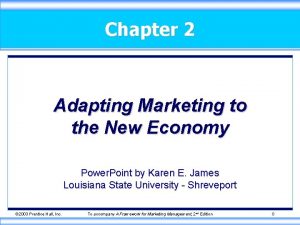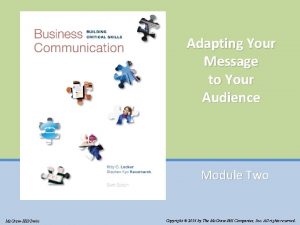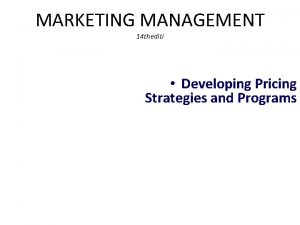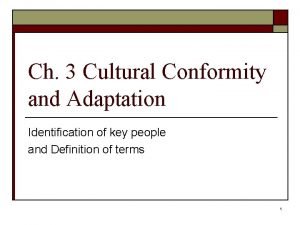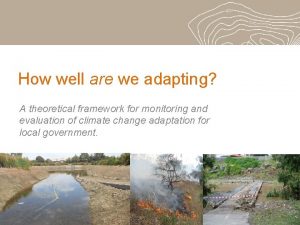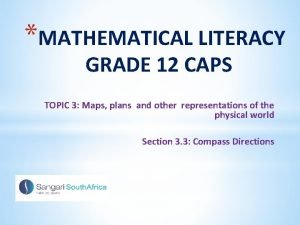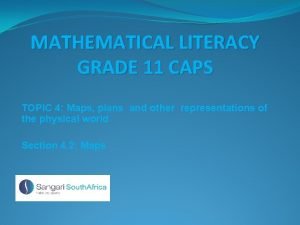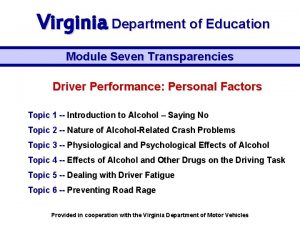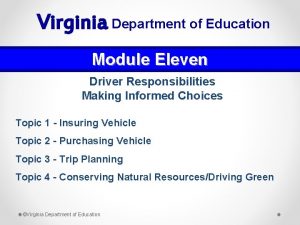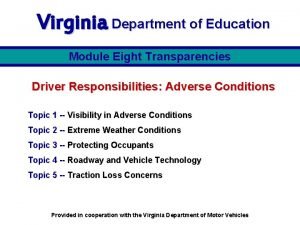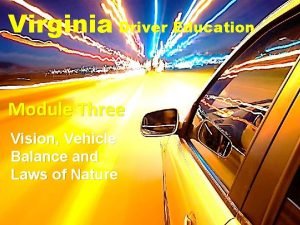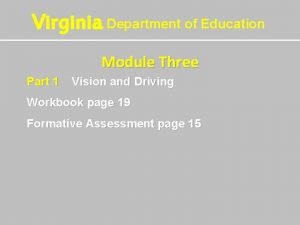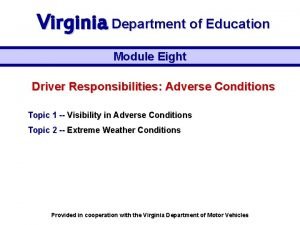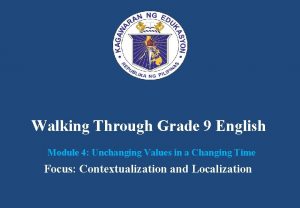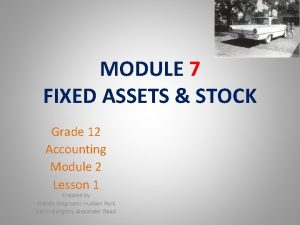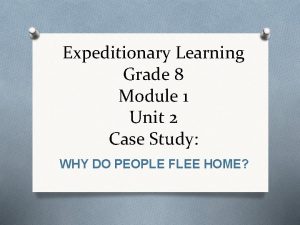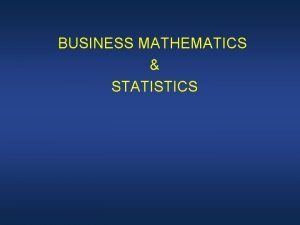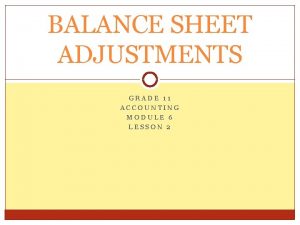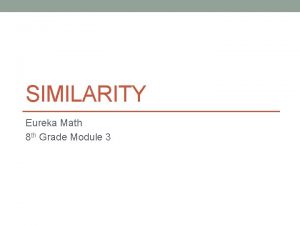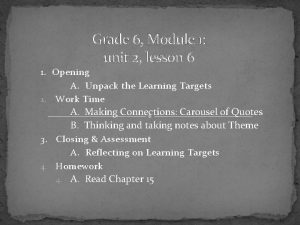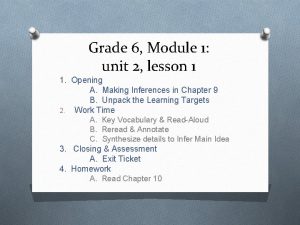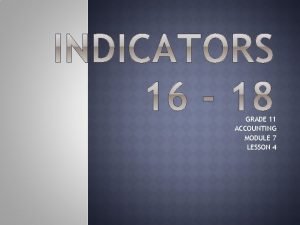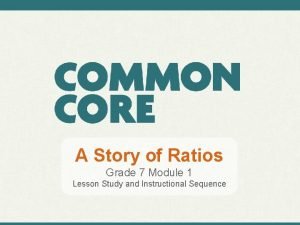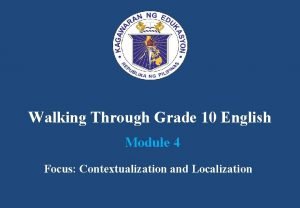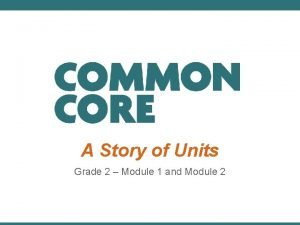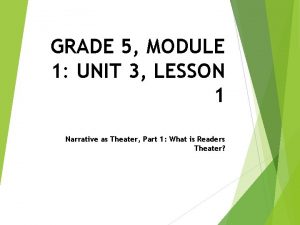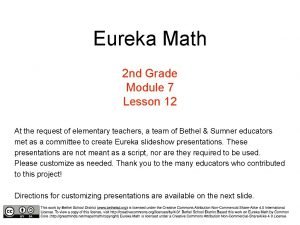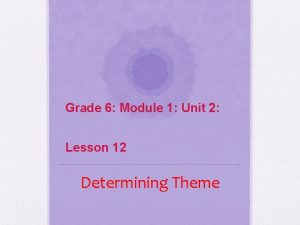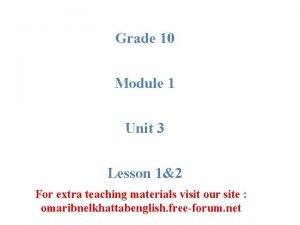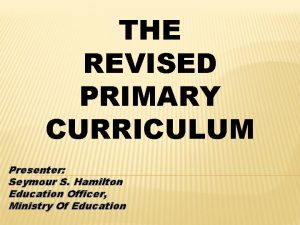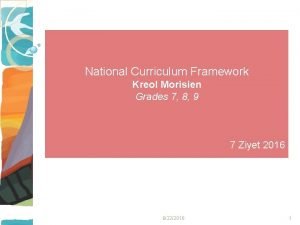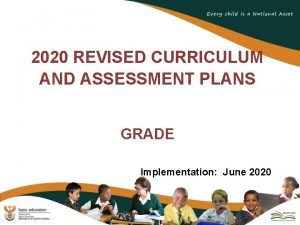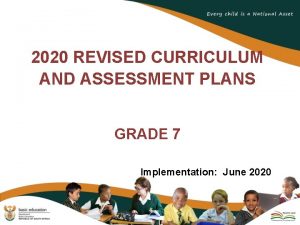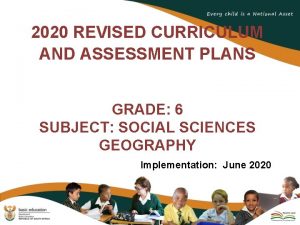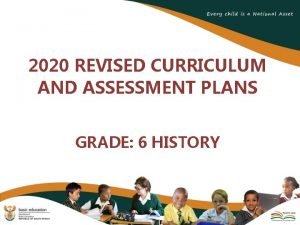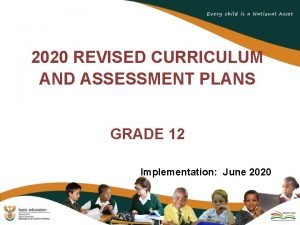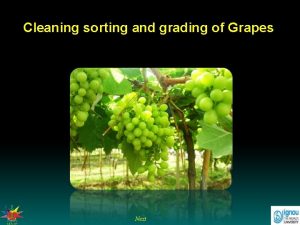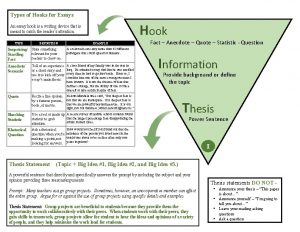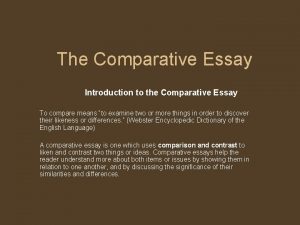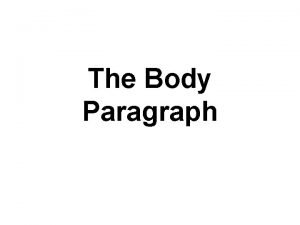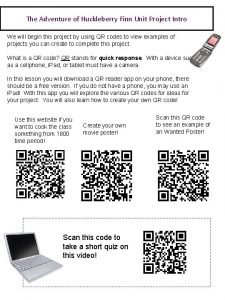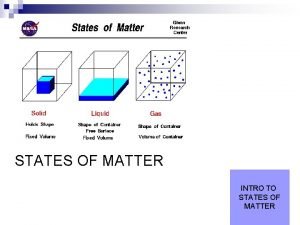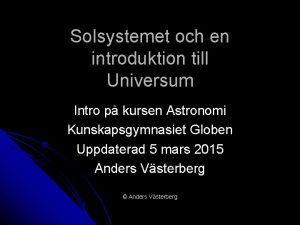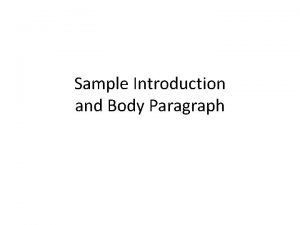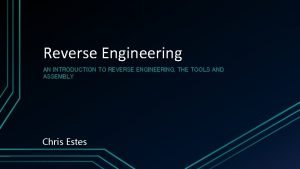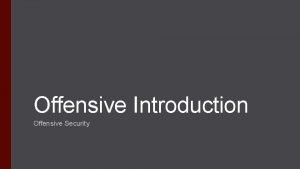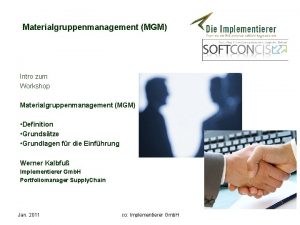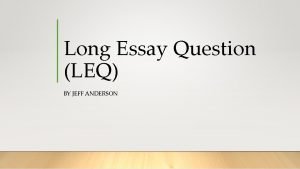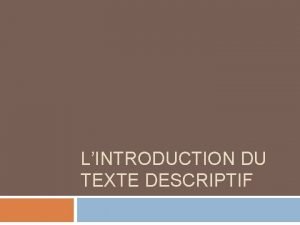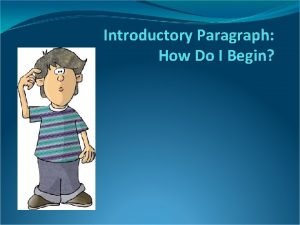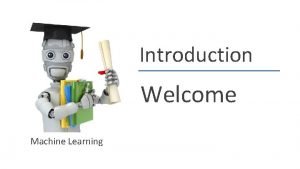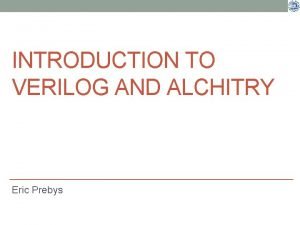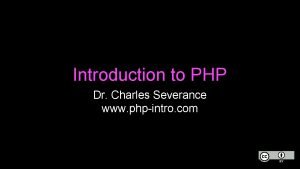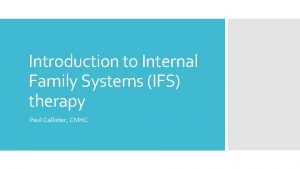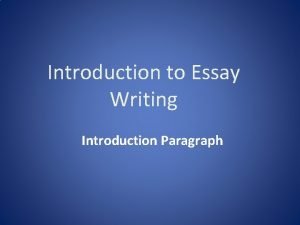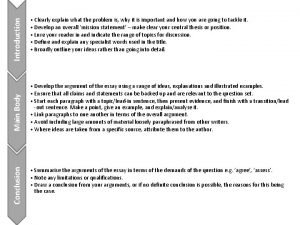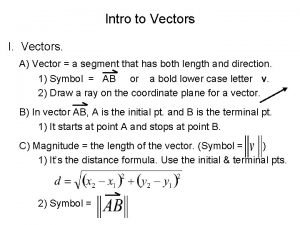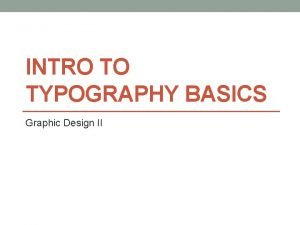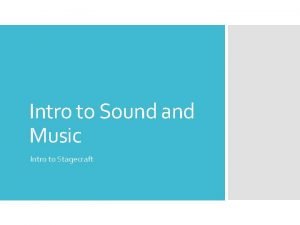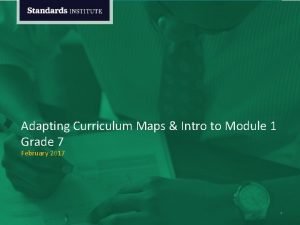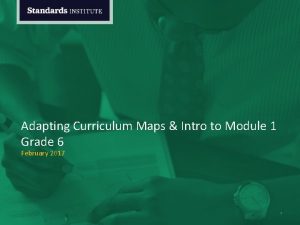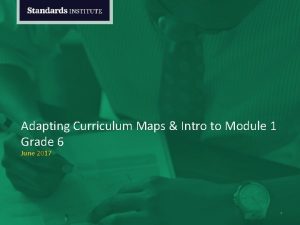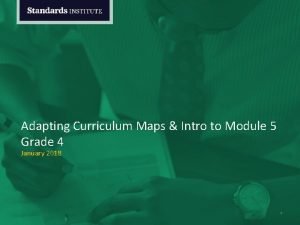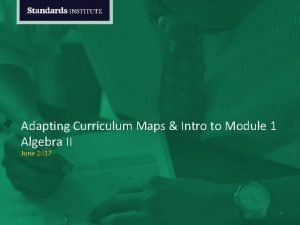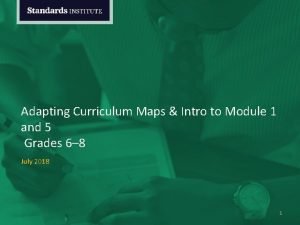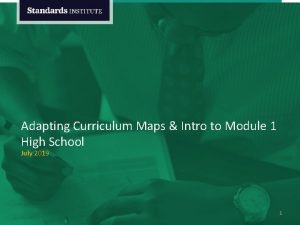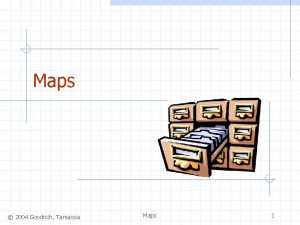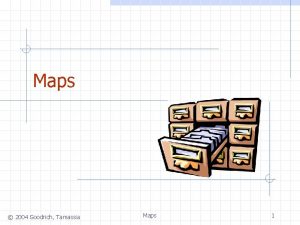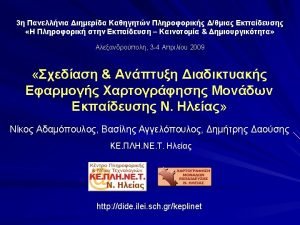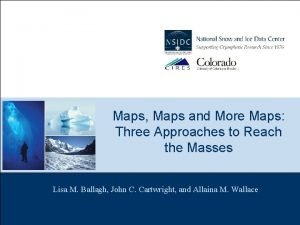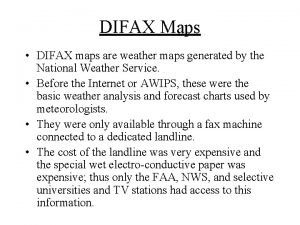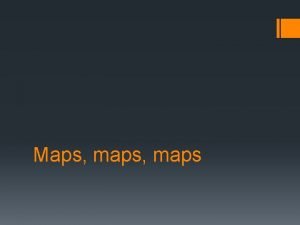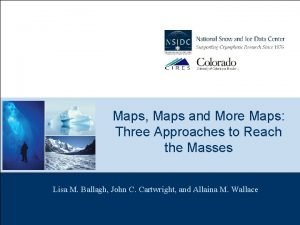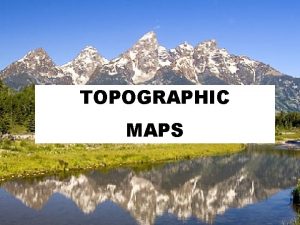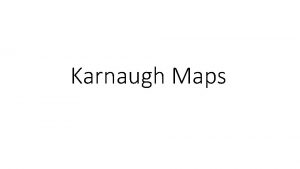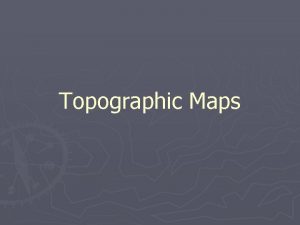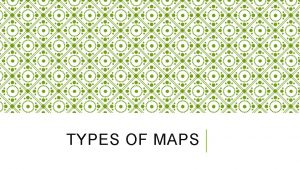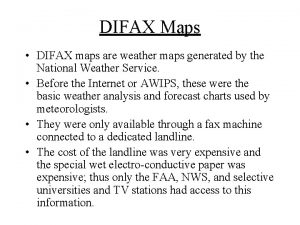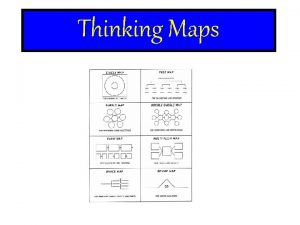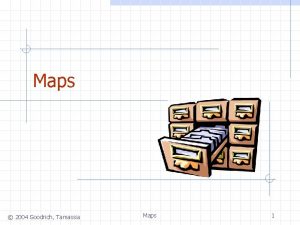Adapting Curriculum Maps Intro to Module 5 Grade






























































































- Slides: 94

Adapting Curriculum Maps & Intro to Module 5 Grade 4 February 2017 1

ADAPTING CURRICULUM MAPS (GRADE 4) Welcome Back! 2

ADAPTING CURRICULUM MAPS (GRADE 4) Introduction: Who I Am Insert photo Name 1 • • Name 2 • • • 3

ADAPTING CURRICULUM MAPS (GRADE 4) Introduction: Who You Are Raise your hand if… • you are a math teacher coach • you hold a different role • you teach in a district school • you teach in a charter school • you teach or work in a different type of school or organization 4

ADAPTING CURRICULUM MAPS (GRADE 4) Thank You for Your Feedback! + 5

ADAPTING CURRICULUM MAPS (GRADE 4) Norms That Support Our Learning • Take responsibility for yourself as a learner • Honor timeframes (start, end, activity) • Be an active and hands-on learner • Use technology to enhance learning • Strive for equity of voice • Contribute to a learning environment in which it is “safe to not know” 6

ADAPTING CURRICULUM MAPS (GRADE 4) This Week Day Ideas Monday Focus and Within Grade Coherence Tuesday Wednesday Rigor and the Mathematical Practices Across Grade Coherence and Instructional Practice Thursday Adaptation and Curriculum Study Friday Adaptation and Practice “Do the math” Connect to our practice 7

ADAPTING CURRICULUM MAPS (GRADE 4) Sessions Today and Tomorrow Today • Morning: Adapting the Grade 4 Curriculum Map • Afternoon: Intro to Module 5 • Module Assessments • Decomposition and Fraction Equivalence (Topic A) Tomorrow • Morning: Adapting and Teaching Lessons • Fraction Equivalence Using Multiplication and Division (Topic B) • Fraction Comparison (Topic C) 8

ADAPTING CURRICULUM MAPS (GRADE 4) Morning: Adapting the Grade 4 Curriculum Map Participants will be able to • analyze a curriculum map through the lens of the standards and Shifts. • describe ways of adapting a curriculum map for students below grade level. 9

ADAPTING CURRICULUM MAPS (GRADE 4) Morning Agenda I. Curriculum Map Scavenger Hunt II. Adapting a Curriculum Map 10

ADAPTING CURRICULUM MAPS (GRADE 4) I. Curriculum Map Scavenger Hunt! You’ll look at • The curriculum map for the year • Titles of each module • The standards associated with each module • (If time) Lessons and assessment items in Modules 1 and 2 11

ADAPTING CURRICULUM MAPS (GRADE 4) Scavenger Hunt! Scope and Sequence: 1. 2. 3. 4. 5. How many modules focus on major work? How many days of instruction is this? What percent of the instructional year is this? Name all modules that include both major work and supporting content. Name all modules that include primarily additional content. Beyond! 1. Find a lesson that begins by engaging students in content from a previous grade. 2. Find an assessment item that connects a supporting cluster to a major one. 3. Find a lesson with a learning objective that uses language based on a cluster heading. 12

ADAPTING CURRICULUM MAPS (GRADE 4) II. Adapting a Curriculum Map What should our approach be if we have students who are not ready to access grade-level content? 13

ADAPTING CURRICULUM MAPS (GRADE 4) From the Appendix to Publisher’s Criteria “The natural distribution of prior knowledge in classrooms should not prompt abandoning instruction in grade level content, but should prompt explicit attention to connecting grade level content to content from prior learning. To do this, instruction should reflect the progressions on which the CCSSM are built…. Much unfinished learning from earlier grades can be managed best inside grade level work when the progressions are used to understand student thinking. ” 14

ADAPTING CURRICULUM MAPS (GRADE 4) What We’re Trying to Avoid: “Blanket Review” 15

ADAPTING CURRICULUM MAPS (GRADE 4) Percentage of 8 th Grade Math Lessons That Were Entirely Review, by Country (1999) 16

ADAPTING CURRICULUM MAPS (GRADE 4) Adaptation Process: Scope and Sequences Use the progressions to identify prerequisite standards from prior grades for all units. Strategically integrate instruction on prerequisites as needed + X. 1, Y. 2 + X. 1, Z. 5 + Z. 2 + X. 3 + X. 1, Z. 5 + X. 1, Y. 5 + X. 4, Y. 5, Z. 6 X = Grade Below Y = 2 Grades Below Z = 3 Grades Below Consider expanding focus on major content where necessary. Major Content 17

ADAPTING CURRICULUM MAPS (GRADE 4) Units and Adaptation Process: Lessons Consider adding additional lessons that address prerequisite content where necessary and appropriate. The prerequisite standards we associate with each unit allow us to adapt lessons and additional lessons. 1 2 3 4 5 6 7 Adapt lessons to include prerequisite content in the context of grade-level objectives. 18

ADAPTING CURRICULUM MAPS (GRADE 4) The Three C’s Coherent Content in Context 19

ADAPTING CURRICULUM MAPS (GRADE 4) Coherent Content 20

ADAPTING CURRICULUM MAPS (GRADE 4) Now You Try: Adaptation At your tables: 1. Look for two modules in Grade 4 that you might spend more time on. Why these modules? 2. What, in your experience, will students struggle with related to that content? 3. What are the prerequisite standards you'd use to adapt those modules? 21

Share Out 22

SESSION 1 (111 M): Rigor– Calibrating Common Core (6 – 8) BREAK Lunch 23

INTRO TO MODULE 5 (GRADE 4) Sessions Today and Tomorrow Today • Morning: Adapting the Grade 4 Curriculum Map • Afternoon: Intro to Module 5 • Module Assessments • Decomposition and Fraction Equivalence (Topic A) Tomorrow • Morning: Adapting and Teaching Lessons • Fraction Equivalence Using Multiplication and Division (Topic B) • Fraction Comparison (Topic C) 24

INTRO TO MODULE 5 (GRADE 4) Afternoon: Intro to Module 5 in Grade 4 Participants will be able to • analyze curriculum through the lens of the standards and Shifts. • use the lens of Shifts and increased understanding of focus content to make appropriate curricular adaptations for students who lack the prerequisite skills for grade-level work. • anticipate student misunderstandings and support them instructionally. 25

INTRO TO MODULE 5 (GRADE 4) Afternoon: Agenda I. Assessing the Assessments II. Deep Dive: Decomposition and Fraction Equivalence (Topic A) III. Essential Understandings IV. Coherent Content in Context: What Are My Students’ Needs? 26

INTRO TO MODULE 5 (GRADE 4) I. Assessing the Assessments (Grade 4) 27

INTRO TO MODULE 5 (GRADE 4) Let’s “Do the Math” for Some Assessment Items End-of-Module Assessment: Mid-Module Assessment: Grade 4 Question 2 and 4 Grade 4 Questions 2 and 3 28

INTRO TO MODULE 5 (GRADE 4) At Your Table: Assessing the Assessments For each assessment item: 1. What standards are evident in this item and how do you know? 2. What aspects of rigor are highlighted in this item and how do you know? Also consider: • Compare the mid-module assessment to the end-of-module assessment. How does learning progress across the module? 29

INTRO TO MODULE 5 (GRADE 4) II. Deep Dive: Topic A Grade 4: . Decomposition and Fraction Equivalence 30

INTRO TO MODULE 5 (GRADE 4) Topic A Overview 31

INTRO TO MODULE 5 (GRADE 4) Sequence of Content Protocol: • Complete the exit tickets for Topic A. • Discuss at your table: o The sequence of content. o Examples of rigor. o Examples that exemplify the mathematical practices. • Present your observations to the whole group. 32

INTRO TO MODULE 5 (GRADE 4) Concept Development Throughout Topic A 33

INTRO TO MODULE 5 (GRADE 4) At Your Table: Concept Development Examine the concept development for the lessons in Topic A. • • What do you notice? What is the math that students are learning? What previous understandings do students need to have? What makes the concept development effective? How does student understanding build over time? 34

INTRO TO MODULE 5 (GRADE 4) Problem Set and Student Debrief 35

INTRO TO MODULE 5 (GRADE 4) At Your Table: Problem Set and Student Debrief Throughout Topic A Examine the problem sets and student debriefs for the lessons in Topic A. • How do these embody the rigor of the standards? • How do these embody the mathematical practices? • How does the student debrief relate to the problem set? 36

INTRO TO MODULE 5 (GRADE 4) Fluency Activities Throughout Topic A 37

INTRO TO MODULE 5 (GRADE 4) At Your Table: Fluency Examine the fluency activities for the lessons in Topic A. • How do they relate to each other and to the focus content for this module? 38

INTRO TO MODULE 5 (GRADE 4) Application Problem Throughout Topic A 39

INTRO TO MODULE 5 (GRADE 4) At Your Table: Application Examine the application problems for the lessons in Topic A. • How do they relate to each other and to the focus content for this module? 40

III. Essential Understandings 41

INTRO TO MODULE 5 (GRADE 4) Essential Understandings Reflect on Topic A: • What is the focus content, and how does instruction support student understanding of it? • What are the essential student learning experiences that support the focus content? 42

INTRO TO MODULE 5 (GRADE 4) Spotlight: Module 5, Topic A 43

IV. Coherent Content in Context: What Are My Students’ Needs? 44

INTRO TO MODULE 5 (GRADE 4) Coherent Content in Context: What Are My Students’ Needs? • Would you add supplementary lessons? Where and on which standards? • How could you adapt the fluency activities to help students access gradelevel content? • How could you adapt the application problems to help students access grade-level content? • How could you adapt the concept development progression to help students access grade-level content? • How could you adapt the problem set and student debrief to help students access grade-level content? 45

Daily Participant Feedback and Knowledge Survey Post-Test Please check your inbox for an email from research@standardsintitutes. org.


ADAPTING AND TEACHING LESSONS IN MODULE 5 (GRADE 4) Welcome Back! 48

ADAPTING AND TEACHING LESSONS IN MODULE 5 (GRADE 4) Thank You for Your Feedback! + 49

ADAPTING AND TEACHING LESSONS IN MODULE 5 (GRADE 4) Norms That Support Our Learning • Take responsibility for yourself as a learner • Honor timeframes (start, end, activity) • Be an active and hands-on learner • Use technology to enhance learning • Strive for equity of voice • Contribute to a learning environment in which it is “safe to not know” 50

ADAPTING AND TEACHING LESSONS IN MODULE 5 (GRADE 4) This Week Day Ideas Monday Focus and Within Grade Coherence Tuesday Wednesday Rigor and the Mathematical Practices Across Grade Coherence and Instructional Practice Thursday Adaptation and Curriculum Study Friday Adaptation and Practice “Do the math” Connect to our practice 51

ADAPTING AND TEACHING LESSONS IN MODULE 5 (GRADE 4) Sessions Yesterday and Today Yesterday • Morning: Adapting the Grade 4 Curriculum Map • Afternoon: Intro to Module 5 • Module Assessments • Decomposition and Fraction Equivalence (Topic A) Today • Morning: Adapting and Teaching Lessons • Fraction Equivalence Using Multiplication and Division (Topic B) • Fraction Comparison (Topic C) 52

ADAPTING AND TEACHING LESSONS IN MODULE 5 (GRADE 4) Objectives Participants will be able to • analyze curriculum through the lens of the standards and Shifts. • use the lens of the Shifts and increased understanding of focus content to make appropriate curricular adaptations for students who lack prerequisite skills for grade-level work. • prepare and deliver lessons using the core actions in the IPG.

ADAPTING AND TEACHING LESSONS IN MODULE 5 (GRADE 4) Agenda I. Deep Dive: Module 5, Topic B II. Buddy Teaching with IPG III. Essential Understandings IV. Coherent Content in Context: What Are My Students’ Needs? V. Deep Dive: Module 5, Topic C VI. Essential Understandings VII. Coherent Content in Context: What Are My Students’ Needs? VIII. Buddy Teaching an Adapted Lesson 54

I. Deep Dive: Module 5, Topic B • Fraction Equivalence Using Multiplication and Division 55

ADAPTING AND TEACHING LESSONS IN MODULE 5 (GRADE 4) Topic B Overview 56

ADAPTING AND TEACHING LESSONS IN MODULE 5 (GRADE 4) Sequence of Content Protocol: • Complete the exit tickets for Topic B. • Discuss at your table: o The sequence of content. o Examples of rigor. o Examples that exemplify the mathematical practices. • Present your observations to the whole group. 57

ADAPTING AND TEACHING LESSONS IN MODULE 5 (GRADE 4) Concept Development Throughout Topic B 58

ADAPTING AND TEACHING LESSONS IN MODULE 5 (GRADE 4) At Your Table: Concept Development Examine the concept development for the lessons in Topic B. • • What do you notice? What is the math that students are learning? What previous understandings do students need to have? What makes the concept development effective? How does student understanding build over time? 59

ADAPTING AND TEACHING LESSONS IN MODULE 5 (GRADE 4) Problem Set and Student Debrief 60

ADAPTING AND TEACHING LESSONS IN MODULE 5 (GRADE 4) At Your Table: Problem Set and Student Debrief Throughout Topic B Examine the problem sets and student debriefs for the lessons in Topic B. • How do these embody the rigor of the standards? • How do these embody the mathematical practices? • How does the student debrief relate to the problem set? 61

ADAPTING AND TEACHING LESSONS IN MODULE 5 (GRADE 4) Fluency Activities Throughout Topic B 62

ADAPTING AND TEACHING LESSONS IN MODULE 5 (GRADE 4) At Your Table: Fluency Examine the fluency activities for the lessons in Topic B. • How do they relate to each other and to the focus content for this module? 63

ADAPTING AND TEACHING LESSONS IN MODULE 5 (GRADE 4) Application Problems Throughout Topic B 64

ADAPTING AND TEACHING LESSONS IN MODULE 5 (GRADE 4) At Your Table: Application Examine the application problems for the lessons in Topic B. • How do they relate to each other and to the focus content for this module? 65

ADAPTING AND TEACHING LESSONS IN MODULE 5 (GRADE 4) II. Buddy Teaching with the IPG As you prepare, think about • Framing your objective in the context of Topic B. What content came before? • What are students doing during the lesson? • As the teacher, what will you be doing? 66

ADAPTING AND TEACHING LESSONS IN MODULE 5 (GRADE 4) Summary of Core Actions 67

ADAPTING AND TEACHING LESSONS IN MODULE 5 (GRADE 4) Table Teaching Ground Rules • Teachers go “all in” for their roles. Stay in character through any trouble spots. • Students are “middle of the class. ” Follow directions, practice, don’t “know it all. ” • Teach the lesson through to the end of the discussion portion. • Stick to the time limits so everyone has a chance to teach. 68

ADAPTING AND TEACHING LESSONS IN MODULE 5 (GRADE 4) After Teaching • The team to the left of the teachers gives one “glow” (something successful) and one “grow” (a question or comment) for the lesson. • Teachers briefly describe their planning processes for the lesson: o How did the problem and discussion advance the key concept of the lesson? o How would you adapt these problems to meet student needs? 69

ADAPTING AND TEACHING LESSONS IN MODULE 5 (GRADE 4) III. Essential Understandings 70

ADAPTING AND TEACHING LESSONS IN MODULE 5 (GRADE 4) Essential Understandings Reflect on Topic B: • What is the focus content, and how does instruction support student understanding of it? • What are the essential student learning experiences that support the focus content? 71

ADAPTING AND TEACHING LESSONS IN MODULE 5 (GRADE 4) Spotlight: Module 5, Topic B 72

IV. Coherent Content in Context: What Are My Students’ Needs? 73

ADAPTING AND TEACHING LESSONS IN MODULE 5 (GRADE 4) Coherent Content in Context: What Are My Students’ Needs? • Would you add supplementary lessons? Where and on which standards? • How could you adapt the fluency activities to help students access grade -level content? • How could you adapt the application problems to help students access grade-level content? • How could you adapt the concept development progression to help students access grade-level content? • How could you adapt the problem set and student debrief to help students access grade-level content? 74

V. Deep Dive: Module 5, Topic C • Fraction Comparison 75

ADAPTING AND TEACHING LESSONS IN MODULE 5 (GRADE 4) Topic C Overview 76

ADAPTING AND TEACHING LESSONS IN MODULE 5 (GRADE 4) Sequence of Content Protocol: • Complete the exit tickets for Topic C. • Discuss at your table: o The sequence of content. o Examples of rigor. o Examples that exemplify the mathematical practices. • Present your observations to the whole group. 77

ADAPTING AND TEACHING LESSONS IN MODULE 5 (GRADE 4) Concept Development Throughout Topic C 78

ADAPTING AND TEACHING LESSONS IN MODULE 5 (GRADE 4) At Your Table: Concept Development Examine the concept development for the lessons in Topic C. • • What do you notice? What is the math that students are learning? What previous understandings do students need to have? What makes the concept development effective? How does student understanding build over time? 79

ADAPTING AND TEACHING LESSONS IN MODULE 5 (GRADE 4) Problem Set and Student Debrief 80

ADAPTING AND TEACHING LESSONS IN MODULE 5 (GRADE 4) At Your Table: Problem Set and Student Debrief Throughout Topic C Examine the problem sets and student debriefs for the lessons in Topic C. • How do these embody the rigor of the standards? • How do these embody the mathematical practices? • How does the student debrief relate to the problem set? 81

ADAPTING AND TEACHING LESSONS IN MODULE 5 (GRADE 4) Fluency Activities Throughout Topic C 82

ADAPTING AND TEACHING LESSONS IN MODULE 5 (GRADE 4) At Your Table: Fluency Examine the fluency activities for the lessons in Topic C. • How do they relate to each other and to the focus content for this module? 83

ADAPTING AND TEACHING LESSONS IN MODULE 5 (GRADE 4) Application Problems Throughout Topic C 84

ADAPTING AND TEACHING LESSONS IN MODULE 5 (GRADE 4) At Your Table: Application Examine the application problems for the lessons in Topic C. • How do they relate to each other and to the focus content for this module? 85

VI. Essential Understandings 86

ADAPTING AND TEACHING LESSONS IN MODULE 5 (GRADE 4) Essential Understandings Reflect on Topic C: • What is the focus content, and how does instruction support student understanding of it? • What are the essential student learning experiences that support the focus content? 87

ADAPTING AND TEACHING LESSONS IN MODULE 5 (GRADE 4) Spotlight: Module 5, Topic C 88

VII. Coherent Content in Context: What Are My Students’ Needs? 89

ADAPTING AND TEACHING LESSONS IN MODULE 5 (GRADE 4) Coherent Content in Context: What Are My Students’ Needs? • Would you add supplementary lessons? Where and on which standards? • How could you adapt the fluency activities to help students access gradelevel content? • How could you adapt the application problems to help students access grade-level content? • How could you adapt the concept development progression to help students access grade-level content? • How could you adapt the problem set and student debrief to help students access grade-level content? 90

ADAPTING AND TEACHING LESSONS IN MODULE 5 (GRADE 4) VIII. Buddy Teaching an Adapted Lesson Protocol: • Adapt a lesson in Topic C using coherent content in context. • Explain the adaptation to your partner. • Teach the adapted section to your partner. 91

Feedback Please fill out the survey located here: www. standardsinstitutes. org • Click “Winter 2017” on the top of the page. • Click “Details” on the center of the page. 49

References Slide # Source 14 http: //achievethecore. org/page/266/k-8 -publishers-criteria-for-the-common-core-state-standards-formathematics-detail-pg 16 Adapted from FIGURE 3. 9. Percentage of eighth-grade mathematics lessons that were entirely review, by country: 1999, http: //www. timssvideo. com/sites/default/files/TIMSS%201999%20 Math%20 Report. pdf 20 Wiring Diagram: http: //achievethecore. org/page/844/ccssm-wiring-diagram 67 http: //achievethecore. org/content/upload/IPG_Coaching_Print%20 Guide_Math_HS_04. 2015. pdf 11, 27 -28, 31, 33, 35, 37, 39, 43, 56, 58, 60, 62, 64, 72, 76, 78, 80, 82, 84, 88 https: //www. engageny. org/

Image References Slide # Name and Photographer 2 Slide # Name and Photographer “Welcome” by Prayitno (Flickr) 70 “Numbers” by Andy Maguire (Flickr) 13 “Mind the Gap” by CGP Grey (Flickr) 73 “DSC 01421 – One Room Schoolhouse” by Dennis Jarvis (Flickr) 22 “Sharing” by ryancr (Flickr) 75 “Docking Diving” by Ryan Mc. Gilchrist (Flickr) 23 “Coffee Break” by Sam Carpenter (Flickr) 86 “Blue Ice” by Moyan Brenn (Flickr) 30 “NOAA Ocean Explorer” by Deep Discoverer Recovery (Flickr) 89 “On the darkside” by Valerie Everett (Flickr) 41 “leaf plas brondanw MAY 08” by Davina Ware (Flickr) 44 “Free to use Texture” by tanakawho (Flickr) 46 “Knowledge” by Daniel Voyager (Flickr) 47 “ 365/365: 12/31/2013” by peddhapati (Flickr) 48 “Welcome” by Bob Duan (Flickr) 55 “Everybody's Diving at the Beach” by Diana Robinson (Flickr)
 Adapting curriculum to bridge equity gaps
Adapting curriculum to bridge equity gaps Maps google maps reittihaku autolla
Maps google maps reittihaku autolla How well are we adapting
How well are we adapting Adapting marketing to the new economy
Adapting marketing to the new economy Adapting and adopting materials
Adapting and adopting materials Adapting the message to your audience
Adapting the message to your audience Adapting to challenges of the micro environment
Adapting to challenges of the micro environment Adapting the price
Adapting the price The process of adapting borrowed cultural traits.
The process of adapting borrowed cultural traits. Adapting the price
Adapting the price Adapting to your audience
Adapting to your audience How well are we adapting
How well are we adapting C device module module 1
C device module module 1 Different types of maps in maths lit
Different types of maps in maths lit Maths literacy grade 12 maps
Maths literacy grade 12 maps Scale maths lit
Scale maths lit Mathematical literacy grade 11 maps and plans
Mathematical literacy grade 11 maps and plans Module 10 topic 3 drivers ed
Module 10 topic 3 drivers ed Module 7 topic 3 drivers ed
Module 7 topic 3 drivers ed Module 11 topic 1 insuring a vehicle
Module 11 topic 1 insuring a vehicle Module 8 topic 1 drivers ed
Module 8 topic 1 drivers ed Standard 4 part 1 a: vehicle balance & control
Standard 4 part 1 a: vehicle balance & control Lane position 1-4
Lane position 1-4 Module 5 intersections and roundabouts
Module 5 intersections and roundabouts Curriculum guide for driver education in virginia module 8
Curriculum guide for driver education in virginia module 8 English 9 module 4
English 9 module 4 Principles of marketing grade 12 module 1 answer key
Principles of marketing grade 12 module 1 answer key New era accounting grade 10 memo pdf module 5
New era accounting grade 10 memo pdf module 5 Expeditionary learning grade 8
Expeditionary learning grade 8 Ratio and proportion business math
Ratio and proportion business math New era accounting grade 11 module 6
New era accounting grade 11 module 6 1:4 scale
1:4 scale Grade 8 module 1 unit 2 lesson 6 answer key
Grade 8 module 1 unit 2 lesson 6 answer key Eureka math grade 6 module 1 lesson 1
Eureka math grade 6 module 1 lesson 1 Grade 11 accounting module 1
Grade 11 accounting module 1 A story of ratios
A story of ratios English module grade 10
English module grade 10 Grade 2 module 1
Grade 2 module 1 Grade 5 module 1 lesson 1
Grade 5 module 1 lesson 1 Eureka math 3rd grade module 7
Eureka math 3rd grade module 7 Reading and writing module 6
Reading and writing module 6 Grade 6 module 1: unit 2 answer key
Grade 6 module 1: unit 2 answer key English module grade 10 unit 3
English module grade 10 unit 3 Revised primary curriculum grade 1-3
Revised primary curriculum grade 1-3 National curriculum framework 2016
National curriculum framework 2016 2020 revised curriculum and assessment plans
2020 revised curriculum and assessment plans 2020 revised curriculum and assessment plans
2020 revised curriculum and assessment plans 2020 revised curriculum and assessment plans grade 7
2020 revised curriculum and assessment plans grade 7 2020 revised curriculum and assessment plans grade 6
2020 revised curriculum and assessment plans grade 6 2020 revised curriculum and assessment plans grade 7
2020 revised curriculum and assessment plans grade 7 2020 revised curriculum and assessment plans
2020 revised curriculum and assessment plans 2020 revised curriculum and assessment plans grade 6
2020 revised curriculum and assessment plans grade 6 Revised curriculum 2020
Revised curriculum 2020 How to get the percentage score of quarterly assessment
How to get the percentage score of quarterly assessment Jump rope songs cinderella
Jump rope songs cinderella Culinary
Culinary Grades of milk
Grades of milk Grading of grapes
Grading of grapes Meta - change morph -
Meta - change morph - Theme essay
Theme essay Victor hugo les contemplations introduction
Victor hugo les contemplations introduction What is a hook in an essay
What is a hook in an essay Example of a hook in an introduction paragraph
Example of a hook in an introduction paragraph Introduction to comparative essay
Introduction to comparative essay 1 body paragraph
1 body paragraph Intro qr codes
Intro qr codes States of matter
States of matter Sports advertisement
Sports advertisement Planeternas omloppstid
Planeternas omloppstid Introduction body conclusion example
Introduction body conclusion example Introduction to reverse engineering
Introduction to reverse engineering Connection essay examples
Connection essay examples Intro paragraph examples
Intro paragraph examples Importance of organic compounds
Importance of organic compounds Intro to offensive security
Intro to offensive security Utvecklingssamtal engelska
Utvecklingssamtal engelska Mgm intro selber machen
Mgm intro selber machen Lord of the flies intro
Lord of the flies intro Leq format
Leq format Le sujet divisé
Le sujet divisé Example of an introduction paragraph
Example of an introduction paragraph Introduction to machine learning andrew ng
Introduction to machine learning andrew ng Intro to verilog
Intro to verilog Severance intro
Severance intro Introduction to ifs
Introduction to ifs Antonino virgillito
Antonino virgillito Intro paragraph essay example
Intro paragraph essay example Digestive system introduction
Digestive system introduction Kfc founded
Kfc founded Essay introduction body conclusion
Essay introduction body conclusion Vlsi design tutorial
Vlsi design tutorial Intro to vectors
Intro to vectors Orphan graphic design
Orphan graphic design Sound of music intro
Sound of music intro



